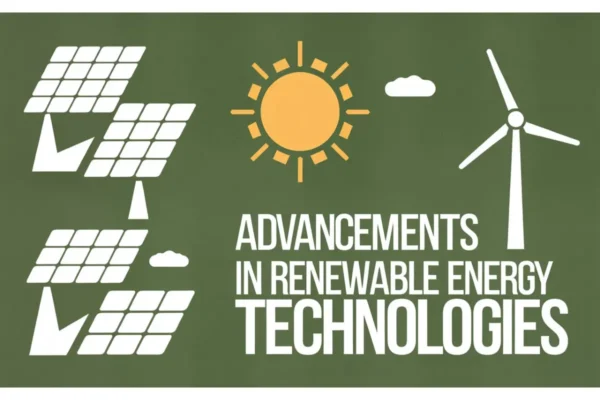
Advancements in Renewable Energy Technologies
Introduction A World Powered by Clean Energy The global energy landscape is undergoing a revolutionary shift. With climate change threatening ecosystems and economies, the urgency to transition to renewable energy has never been greater. Fortunately, advancements in renewable energy technologies are opening up unprecedented possibilities. From improved solar panels to revolutionary bioenergy systems, the world is embracing cleaner and more efficient energy solutions. Let’s delve deeper into these innovations and their transformative potential. 1. Solar Power: A Brighter Tomorrow Solar energy continues to lead the renewable revolution, with significant technological advancements reshaping its potential. Here’s what’s making waves: Next-Gen Solar Panels Innovative Solar Applications Why It Matters: With solar energy costs dropping by 89% in the past decade, this technology is more accessible than ever. 2. Wind Energy: Harnessing Power Offshore Wind power has become a cornerstone of renewable energy. Innovations in this field are driving efficiency and expanding its reach. Floating Wind TurbinesTraditional offshore wind turbines are limited to shallow waters, but floating turbines can operate in deeper areas with stronger, more consistent winds. These advancements are opening up vast new areas for wind power generation. Larger and Smarter TurbinesNew models like the Haliade-X turbine by GE are capable of generating 14 MW of power, enough to supply thousands of homes. Smart sensors and AI are now optimizing performance and reducing downtime. Why It Matters: Offshore wind has the potential to power entire coastal cities while creating thousands of jobs. 3. Bioenergy: From Waste to Power Bioenergy is becoming increasingly sophisticated, making use of organic waste to produce clean energy. Recent breakthroughs include: Advanced Anaerobic DigestionNew systems can process a broader range of organic materials, including agricultural waste and food scraps, to produce biogas. Second-Generation BiofuelsThese biofuels use non-food crops like algae, reducing competition with food supply chains and increasing sustainability. Why It Matters: Bioenergy addresses two issues at once—reducing waste and generating energy sustainably. 4. The Role of AI in Renewable Energy Artificial intelligence is transforming how renewable energy systems are designed, implemented, and maintained: Benefits of Investing in Renewable Energy Switching to renewable energy offers numerous benefits, including: How You Can Contribute Further Reading: Explore the future of global energy. Conclusion Advancements in renewable energy technologies are shaping a cleaner, greener, and more sustainable future. With innovations in solar power, wind energy, and bioenergy, the transition to renewable energy is no longer a distant goal but a rapidly growing reality. By embracing these technologies, we can ensure a better planet for future generations.









